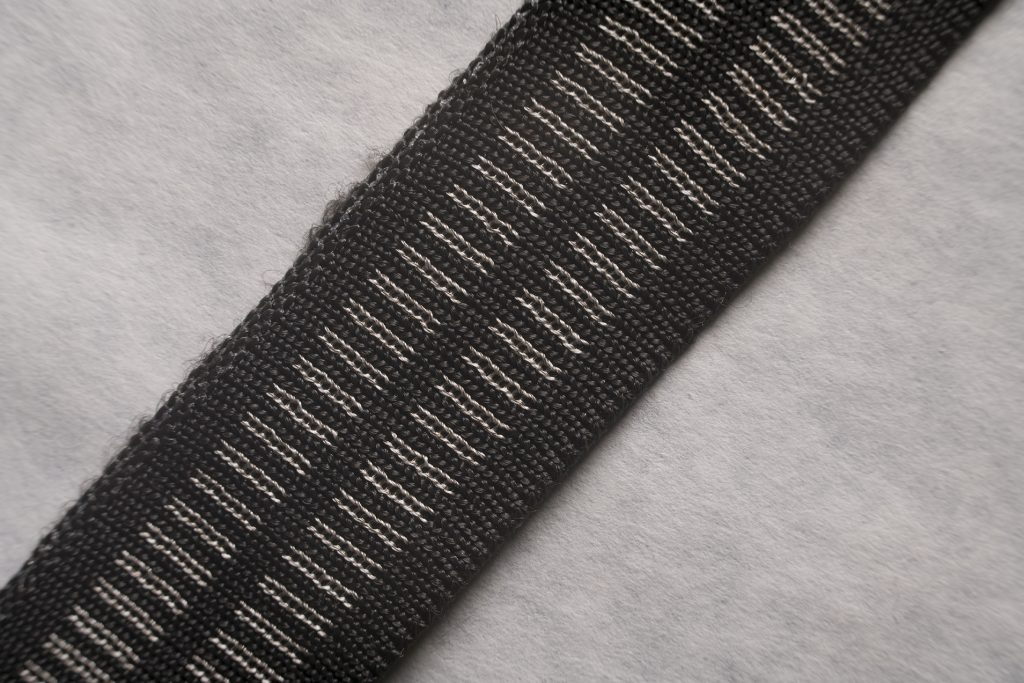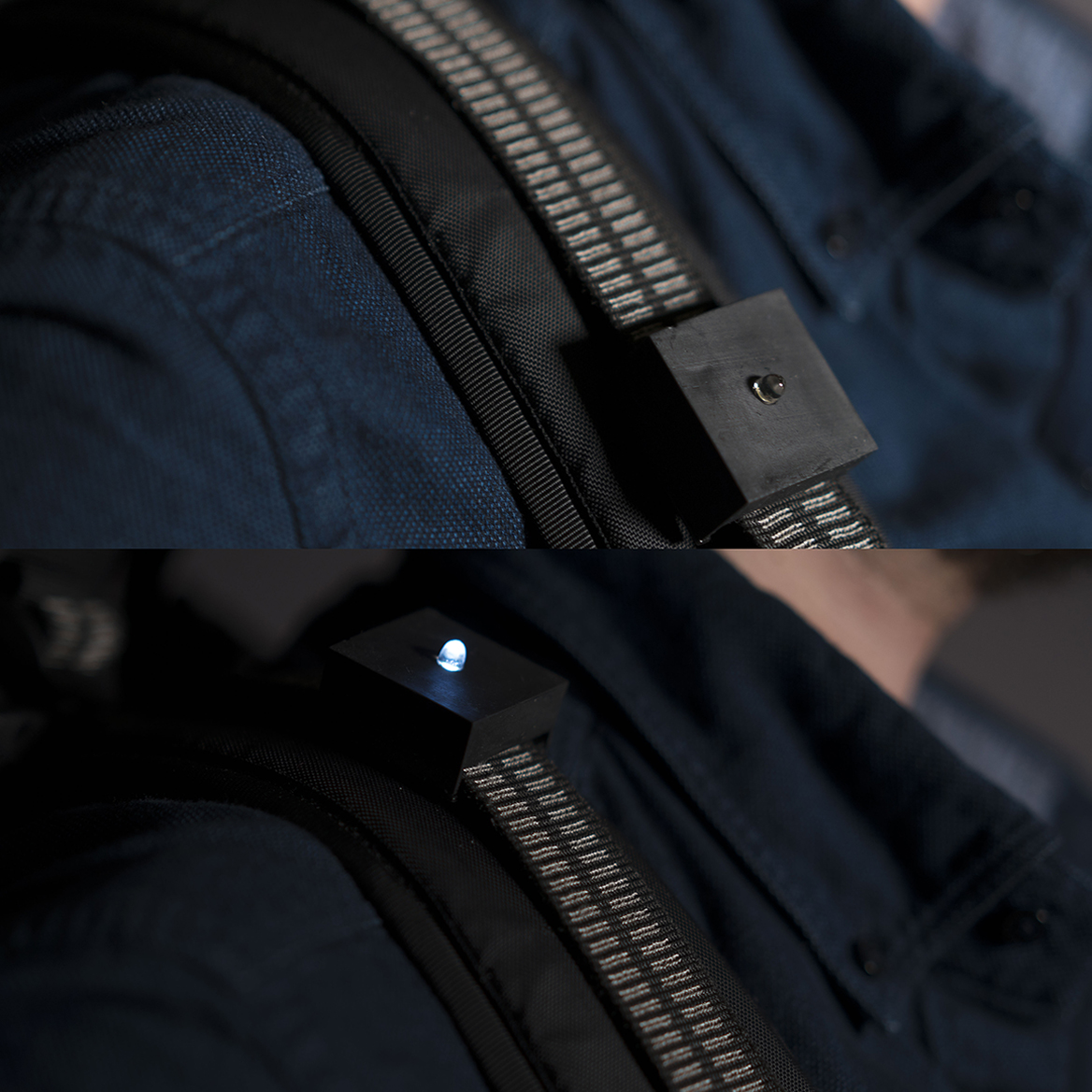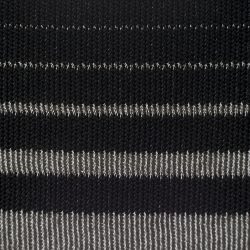THE E-TEXTILE SENSOR PROJECT FROM MIT MEDIA LAB THAT DEVELOPS ELECTRONIC TEXTILES SENSOR MADE OF INTEGRATED CONDUCTIVE YARNS
TEXT: SUDAPORN JIRANUKORNSAKUL
PHOTO COURTESY OF SENSORKNITS
(For English, please scroll down)
ทุกวันนี้ อุตสาหกรรมสิ่งทอมีการพัฒนามากขึ้นกว่าอดีตหลายเท่าตัว ตั้งแต่วัสดุตั้งต้น ที่นอกเหนือไปจากเส้นใยธรรมชาติแล้ว ก็ยังมีการนำ โลหะ แร่ธาตุ และพลาสติกมาใช้ในการถักและทอ รวมทั้งความก้าวหน้า ด้านนวัตกรรมการผลิตและการออกแบบลวดลาย เพื่อให้ครอบคลุมตลาดและความต้องการของผู้บริโภคได้อย่างมีประสิทธิภาพ หนึ่งในนวัตกรรมที่เกิดขึ้นคือ E-textile (electronic textile) หรือสิ่งทออิเล็กทรอนิกส์ที่ผู้ผลิตประยุกต์ดัดแปลงเพื่อเพิ่มความหลากหลายทั้งในด้านคุณสมบัติและฟังก์ชั่นใช้งาน
ก่อนหน้านี้ เรามีโอกาสได้เห็นการพัฒนาสิ่งทออิเล็กทรอนิกส์ผ่านโครงการต่างๆ อย่างการร่วมมือกันระหว่างทีม ATAP จาก Google และ Levi Strauss ใน ‘Project Jacquard’ ที่พวกเขาเลือกใช้เส้นด้ายนำไฟฟ้าหรือ conductive yarn มาเย็บลงไปบนผืนผ้าปกติเพื่อเชื่อมแผงวงจรอิเล็กทรอนิกส์ให้เป็นอันหนึ่งอันเดียวกับผืนผ้าแทนการใช้สายไฟ เพื่อสร้างเป็นเครื่องแต่งกายอัจฉริยะ โดยเชื่อมวงจรอิเล็กทรอนิกส์หรือเซ็นเซอร์ไว้ตามจุดต่างๆ ของเสื้อผ้าเพื่อใช้ในการสั่งงาน และเปิดตัวด้วยเสื้อแจ็คเก็ต ที่ใช้เส้นใยดังกล่าวมาทอไว้บริเวณแขนซ้ายของเสื้อ แล้วนำอุปกรณ์บลูทูธมาติดตั้งที่ข้อมือของเสื้อเพื่อให้ผู้สวมใส่สามารถคุยโทรศัพท์ผ่านเสื้อแจ็คเก็ตได้ โดยผู้ใช้สามารถตั้งค่าการสั่งงานแอพพลิเคชั่นต่างๆ ด้วยการเคลื่อนไหวในรูปแบบที่ตัวเองกำหนดได้ ล่าสุดกับ ‘SensorKnits’ หรือ E-Textile Sensor โครงการที่พัฒนาขึ้น โดยทีมวิจัยอันประกอบไปด้วย Jifei Ou, Don Derek Haddad, Daniel Oran, Joseph Paradiso และ Hiroshi Ishii จาก Tangible Media Group ดำเนินการภายใต้ MIT Media Lab ที่พวกเขาร่วมพัฒนาสิ่งทออิเล็กทรอนิกส์ให้สามารถใส่เครื่องตรวจจับเพื่อเป็นวัสดุตั้งต้นในการสร้างสรรค์ผลิตภัณฑ์ต่างๆ

Conductive yarn and dielectric yarn are weaved in specific patterns creating E-Textiles that can contain various types of sensors
ทีมวิจัยกลุ่มนี้เลือกใช้เส้นใย conductive yarn ที่เป็นสื่อกระแสไฟฟ้าได้มาเป็นวัสดุหลัก ว่ากันง่ายๆ แทนที่จะใช้สายไฟฟ้า ก็เปลี่ยนมาเป็นด้ายนำไฟฟ้าแล้วเย็บลงไปในเนื้อผ้าแทน โดยนำมาถักร่วมกับด้ายไดอิเล็กทริก (dielectric yarn) ที่มีคุณสมบัติเป็นฉนวนไฟฟ้า จนได้ผืนผ้าที่ยังคงคุณสมบัติแบบเดียวกับผ้าทั่วไป ทั้งความรู้สึก ผิวสัมผัส และคุณสมบัติในการพับหรือดัดได้โดยไม่มีการแตกหัก อีกทั้งยังสามารถบรรจุเซ็นเซอร์หรืออุปกรณ์สื่อสารเข้าไปบนตัวผ้าได้ด้วย

Conductive yarn and dielectric yarn are weaved in specific patterns creating E-Textiles that can contain various types of sensors
ผ้าดังกล่าวถูกนำมาสร้างเป็นงานโปรโตไทป์ทั้งหมด 3 ชิ้น เพื่อแสดงให้เห็นถึงคุณสมบัติเด่นๆ ของ E-Textile Sensor ที่ว่า ได้แก่ ‘Lighting Control Tablecloth’ ผ้าปูโต๊ะขนาด 80×120 เซนติเมตร ซึ่งมาพร้อมกับอุปกรณ์ที่ถูกออกแบบมาเพื่อควบคุมกระแสไฟฟ้า โดยสามารถเปลี่ยนผ้าปูโต๊ะธรรมดาให้กลายเป็นแผงควบคุมแสงสว่างภายในห้อง ‘Safety Light Belt’ หรือเข็มขัดนิรภัยที่บรรจุหลอดไฟ LED, แบตเตอรี่ และตัวต้านทานกระแสไฟฟ้า ซึ่งเข็มขัดดังกล่าวมีฟังก์ชั่นในการให้แสงสว่างโดยสามารถปรับระดับความอ่อนเข้มเพื่อสร้างความปลอดภัยให้แก่นักปั่นจักรยาน ตลอดจนคนเดินถนนในยามค่ำคืน ไปจนถึง ‘Musical Handbag’ กระเป๋าสำหรับบรรจุแบตเตอรี่ ที่เมื่อคลี่ออกและเชื่อมเข้ากับวงจรไฟฟ้า ก็จะได้เครื่องดนตรีขนาดพกพาที่สามารถใช้งานได้ไม่ต่างไปจากเครื่องดนตรีทั่วไป

Musical Handbag is one of the applications that is designed to be played like a musical instrument
จากยุคแรกเริ่ม การผนวกอุปกรณ์อิเล็กทรอนิกส์เข้ากับสิ่งทอนั้นแม้จะมีความเป็นไปได้ แต่ก็ยังมีจุดด้อยในแง่ความสวยงาม เพราะความระเกะระกะของสายไฟและเส้นลวดที่นำมาทอรวมกับเนื้อผ้า ตลอดจนเรื่องความปลอดภัยและอันตรายที่อาจเกิดขึ้นเมื่อถูกใช้งาน จนถึงปัจจุบัน สิ่งทออิเล็กทรอนิกส์ได้ถูกพัฒนาให้มีคุณสมบัติที่เป็นได้มากกว่าสิ่งทอทั่วไป และเป็นวัสดุตั้งต้นที่สามารถนำไปใช้งานได้หลายจุดประสงค์ ตั้งแต่การผลิตเป็นเสื้อผ้าสำหรับทารกที่เสี่ยงต่อการเสียชีวิตโดยฉับพลัน ด้วยการติดวงจรบนเสื้อผ้าเพื่อส่งสัญญาณผ่าน ไปทางเครื่องคอมพิวเตอร์ส่วนตัวให้ผู้ปกครองรับทราบข้อมูลได้ทันท่วงที การตัดเย็บเป็นชุดดับเพลิงโดยติดตั้งเครื่องตรวจวัดปริมาณควันพิษที่เข้าสู่ร่างกาย รวมไปถึงสิ่งที่ SensorKnits กำลังนำเสนออยู่ ณ เวลานี้ด้วยเช่นกัน

Nowadays the textile industry has seen vehement development. The innovativeness and diversity of materials has evolved a great deal from natural fibers with metal, elements and plastic now finding their ways into the making of new types of textile. Manufacturing technology and ornamental design have also progressed to expand market share and meet consumers’ demands more effectively. One of the innovations that emerge during this time of thriving digital technology is E-textile (electronic textile), which has been developed and adapted to possess the more diverse physical and functional qualities.
We have witnessed the development of E-textile through a number of different collaborations such as that between Google’s ATAP and Levi Strauss with ‘Project Jacquard’ where the conductive yarns replace some of a textile’s original threads, wirelessly connecting and integrate electronic circuit to the fabric. With that, smart apparels are made possible with electronic circuits and sensors embedded throughout different parts of the clothe for users to operate. The project launches the jacket with the fabric of the left sleeve made of E-textile. A Bluetooth device installed at the wrist of the left cuff of the apparel for user to answer incoming calls, change music or get directions via the smart jacket while different applications can be preset and operated according to the wearer’s touch gestures.
In the meantime, a new innovation has been developed by a research team of Jifei Ou, Don Derek Haddad, Daniel Oran, Joseph Paradiso and Hiroshi Ishii of Tangible Media Group operated under MIT Media Lab, Known as ‘SensorKnits’, the E-Textile Sensor made of integrated conductive yarns aims to be used as a material for different types of products. Simply speaking, instead of using electrical cords, the conductive threads are incorporated into the knit structure with dielectric yarns, rendering a fabric that feels and looks like a normal textile. It can be folded or twisted without being broken with a wireless connection with smart devices.
The team develops three different prototypes using the material to showcase the key features of E-Textile Sensor. ‘Lighting Control Tablecloth’ is the 80 by 120 cm tablecloth interface with 12 knitted rheostats, which enable the lighting control to be operated and turn a simple looking fabric into a lighting source for a space. ‘Safety Light Belt’ offers the functionality that provides light of various intensities, colors, and flickering rates and patterns, bringing greater safety for users such as bikers and pedestrians during night time. ‘Musical Handbag’ is designed to have built-in battery and used as a protective storage bag for a speaker, as well as a musical instrument/controller when unzipped and flattened onto a surface.

A Safety Light Belt on backpack acts as a variable resistor to dim the light
From the early days of E-textile development, the incorporation of electronic device to fabrics, while possible, came with inferior aesthetic quality due to the unorganized tangle of electrical cords and wires knitted to the fabric. Users’ safety is also an important issue when it comes to the actual usage of the material. E-textile has been developed to include several new features, leading the textile industry into the uncharted territory with cutting-edge innovations. The material can be used to create different types of products in addition to everyday objects such as the three prototypes developed by SensorKnits, from the clothing for first-born babies at risk of sudden infant death syndrome where E-textile sensor enables the detected signals to be sent to a personal computer, allowing the parents to have real-time updates on their child’s condition to firefighters’ apparel, which the wireless connection between the fabric and integrated smart device can detect and identify toxic smoke.



